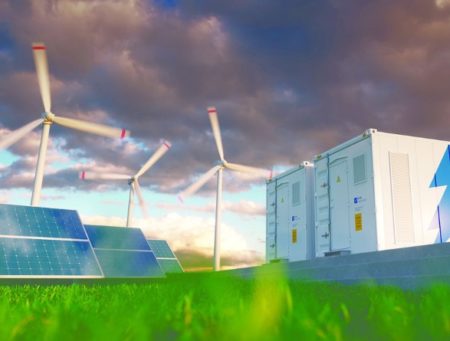November 9, 2019 – Distributed Energy Storage Systems (DESS) is an answer to making energy from wind, solar, and other intermittent renewable sources viable. Whether managed over a national grid or feeding a local microgrid, DESS provides a means of reliable continuous power without having to use backup fossil-fuel-burning electrical power stations.
In the latest Navigant Research study entitled “Country Forecasts for Distributed Energy Storage,” it cites solar and wind power as the primary growth drivers for DESS indicating a twentyfold increase in usage in 26 countries by 2028. Ricardo F. Rodriguez, one of Navigant’s research analysts argues that DESS represents flexibility in energy generation infrastructure deployment and “limits the need for peak capacity resources.”
Generating continuous electricity to match demand requirements has always been the most significant detractor for the use of intermittent renewable energy resources. Particularly, in countries where the bulk of electricity is distributed over a ubiquitous grid, utility companies to ensure predictable, continuous power build to exceed peak demand requirements. Whether the power comes from thermal power plants burning coal, or natural gas, or from solar and wind farms, exceeding peak demand is an industry sacred cow. That surplus power generation, produced in off-peak periods can find a home in DESS.
You are probably thinking that DESS comes in the form of large batteries that can discharge stored energy when needed. But energy storage comes in many different forms, not just chemical batteries. For example, surplus power can pump water uphill into reservoirs where it can be released as needed or can create compressed air storage which when released can drive turbines connected to generators.
The real strength of DESS is in its ability to help energy companies transition from traditional thermal-power generation to renewables. DESS smooths out the supply of electricity from intermittent energy sources of which the sun and wind are two. And DESS can discharge power quickly unlike reserve fossil-fuel burning thermal power stations which require a considerably longer ramp-up. DESS also works best in remote areas away from a ubiquitous transmission grid where power disruptions are more frequent. In these more isolated regions, a microgrid distribution system with DESS backup can prove to be an ideal solution.
The Union of Concerned Scientists, in a 2015 publication, noted that the United States had 23 Gigawatts of storage capacity equal to 38 typical coal-fired power plants. At that time pumped hydroelectric storage represented 96% of total capacity. But growth in DESS is likely not to come from hydroelectric pumped storage but rather from alternative solutions such as large-scale chemical battery vaults like the ones seen to the right in the illustration below.
Examples of DESS in practice are growing. There is the Tesla-installed 100 Megawatt lithium-ion battery system recently installed in Hornsdale, South Australia. Billed as the world’s largest lithium-ion storage system, it is one of a number of projects slated for completion in Australia by 2021 and includes a 900-Megawatt battery from Neoen SA, a 270-Megawatt installation built by Total Eren SA, and a 140-Megawatt battery from EPS Energy.
Flow batteries are among the mix in energy storage solutions. These giant storage tanks of liquid electrolytes can provide a lower-cost solution than lithium-ion stacked battery technologies such as the system Tesla installed at Hornsdale.
More recently I have written about modular cryogenic energy storage systems such as the CRYOBattery providing power to 200,000 homes in the United Kingdom. And even funkier is kinetic storage devices like flywheels which, deployed in a farm of these devices, is currently providing 20-Megawatts of power at the Stephentown Flywheel Energy Storage Plant in New York State.
The biggest impediment to wholesale DESS deployment will be the reluctance of energy providers to adopt the technology with a pre-existing infrastructure of sunken costs into fossil-fuel-based electricity production. Mitigating climate change, however, will be the driving force for DESS growth with governments around the world seeing the value of storage associated with intermittent renewable energy as the new paradigm for power generation.
Energy storage will not come cheap. The necessity, however, to address carbon emissions, and the limitations on hydroelectric renewable power capacity with fewer sites available, are among the factors behind Navigant’s forecast of a 2,000% growth.
Postscript
A reader of this blog posting, Bob Meinetz, suggested that Navigant’s forecast is, in his words, “far too conservative.” He refers to Lazard, and Deutsche Bank forecasts of anywhere from 12,000 to 20,000%, and GreenTech Media reporting an increase of more than 70,000%.










Great Share! Can I just say what a relief to find someone who actually knows what theyre talking about on the internet. You definitely know how to bring an issue to light and make it important. More people need to read this and understand this side of the story. I cant believe youre not more popular because you definitely have the gift.